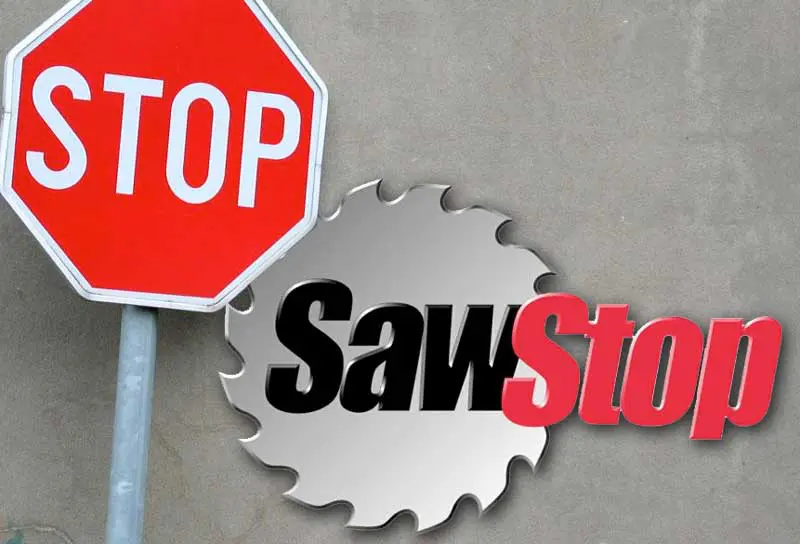We understand. You like to mind your own business. But not this time. Not if you want the inexpensive portable table saw to be something you can legally purchase. Contrast this to something starting around $600 and could cost you hundreds of dollars in busted-up blades and spent SawStop cartridges. The U.S. Consumer Product Safety Commission extended the public comment period for developing a table saw safety rule by 60 days. The commissioners at the CPSC voted 4-0 to accept comments through Feb. 10, 2012. The original comment deadline was Dec. 12 (three days ago).
The End of the Affordable Table Saw
Commenting is significant as the CPSC stated that it will consider public comments in creating the standard. If anything, this tells us what fragile ground the commission stands on. At this point, we don’t feel as if they understand the unintended consequences of their proposals one bit. The federal safety agency issued an Advanced Notice of Proposed Rulemaking (ANPR) for drafting a standard to address table saw blade contact injuries back in October.
The CPSC has actually listed the types of information it is requesting. They include:
- Studies, tests, or descriptions of new technologies or new applications of existing technologies that can address blade contact injuries and estimates of costs associated with incorporation of new technologies or applications.
- Estimated manufacturing cost per table saw of new technologies or applications that can address blade contact injuries.
- Information on the effectiveness or user acceptance of new blade guard designs.
- Information that supports or disputes preliminary economic analyses on the cost of employing technologies that reduce blade contact injuries on table saws.
- Studies, research or data on detection/reaction systems that have been employed to mitigate blade contact.
Table Saw Data, Data, and More Data
The problem is that the PTI (Power Tool Institute) has already submitted much of this data. The PTI is made up of tool manufacturers (Black & Decker, Delta, DeWalt, Ryobi, etc) who collect and manage this type of information. The CPSC doesn’t seem to feel it has enough data. It also doesn’t seem willing to allow the recently introduced (2010) table saw blade guards to permeate the market to the point where their effectiveness can be measured. To date, there have been no reported injuries with the new blade guards, according to PTI.
The CPSC, however, seems fixated on its numbers. Some, PTI says are skewed and do not tell the whole story. According to the CPSC, approximately 67,000 saw operators sustain injuries related to coming in contact with a saw blade. This is based on an analysis of 2007 and 2008 accident reports. The CPSC has suggested that requiring “flesh detection devices” like the commercially available SawStop could help bring about a significant reduction in table saw operator injuries, including amputations.
The problem is that the whole reason for using a guard is to protect users from the blade. Introduce flesh-sensing technology as a mandatory standard and watch those blade guards go bye-bye. Then the real injuries start. Why? Because SawStop’s patented technology does nothing, on its own, to prevent injuries from kickback—which is extremely dangerous. Add to that the fact that adding SawStop to the entry-level table saw market will eliminate that market and you have some serious considerations.
What Really Causes Injuries
100% of table saw injuries are from improper saw use or disregarding the existing safety devices.
The Power Tool Institute (PTI) has stated (correctly, we believe) that if the CPSC requires flesh-detecting technology, it will essentially be granting a monopoly to SawStop. And our present understanding is that none of this arose on its own, but is the result of a consistent, systematic push from SawStop’s inventor (who is, coincidentally, a patent attorney). SawStop has only continued to apply for and secure additional patents since this process began. So there do not appear to be any competing methods that will not involve royalty or licensing costs on top of manufacturing costs. This could signal the end of the affordable table saw as we know it.
The PTI launched a campaign encouraging woodworkers and consumers to submit comments to the CPSC “opposing the mandatory rule for table saws.” We agree.
If consumers don’t add their comments, it will be very difficult to justify complaining when that portable project table saw goes from $99 to $599. Professional jobsite saws would rise from $500 to $900 or more.
Comments to the CPSC are now closed.



